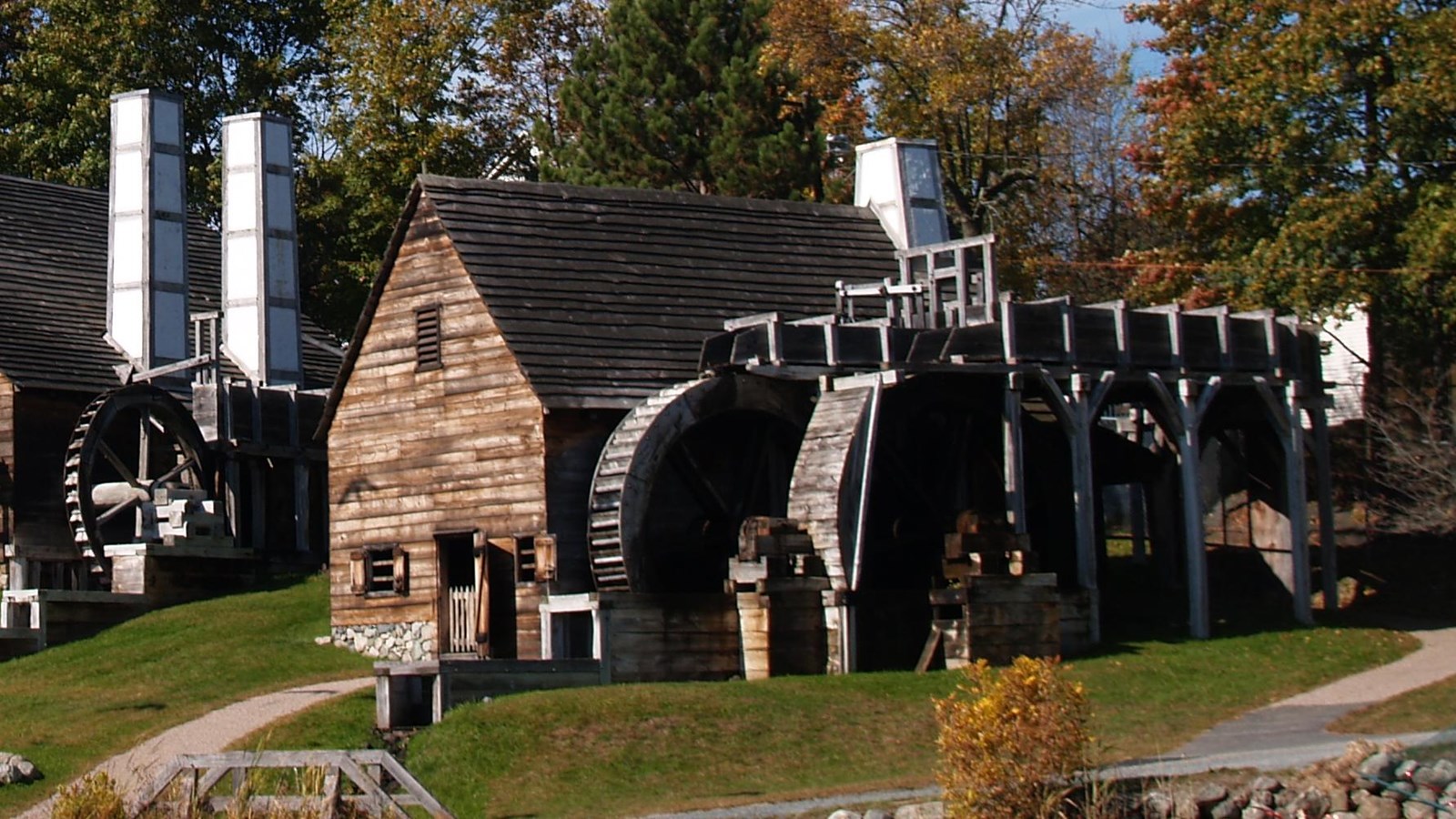Last updated: August 2, 2021
Place
Rolling and Slitting Mill

NPS Photo
Scenic View/Photo Spot
The Rolling and Slitting Mill was advanced technology for its time period. In fact, when the original Rolling and Slitting Mill was built, there were only around 12 buildings like this in the world, all of the rest in the Old World.
In this building, merchant bars were further worked to create other semi-finished products that blacksmiths could use. First, the bars were heated in a reverberatory furnace to make them malleable. Next, the bars went through pairs of rollers, dense iron cylinders with a small gap between them. This reshaped the bars into flat stock. These "flats" could be used to make wagon tires, saw blades, and other products.
Many of the flats were sold as they were, but others were reheated in the reverberatory furnace and put through the next set of machinery; the slitters. The slitters are a pair of interlocking discs that spin in opposite directions. When a heated flat is forced between them, the discs break it up into many smaller rods of iron. These products were primarily used for making nails, and were therefore called "nail rods."
Both flats and nail rods were semi-finished goods that helped a blacksmith save a lot of time, and therefore save money.
